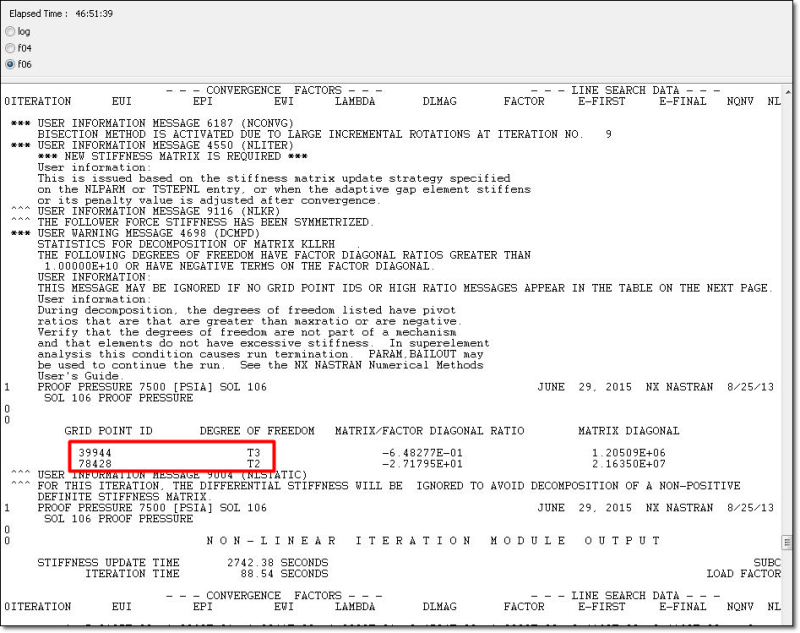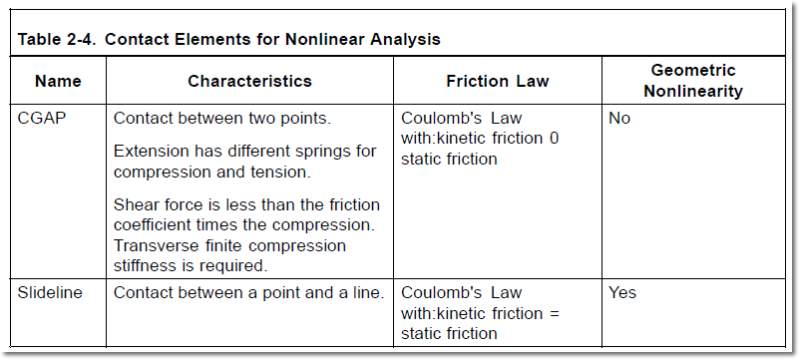FireflySpace
New member
- Mar 9, 2015
- 7
Hello Everyone,
I've read thru some great responses regarding troubleshooting negative diagonal ratios & excessively large MAXRATIO, I was hoping we could take a look at my current f06 output and get some constructive feedback.
The general model:
1.) All composite pressure vessel
2.) Liner is made of plate elements
3.) The filament wound overwrap is also a plate elements
4.) The liner uses a glued connection property to connect the liner to the overwrap
5.) The boss ports at Solid elements that are also connected with glued connection properties to both the liner and overwrap
I've attached the f06 output that I am currently seeing around the .5 Load factor. I'm solving the model using NX Nastran SOL106. All thoughts and feedback are very much welcomed, thank-you kindly.
Best,
J
I've read thru some great responses regarding troubleshooting negative diagonal ratios & excessively large MAXRATIO, I was hoping we could take a look at my current f06 output and get some constructive feedback.
The general model:
1.) All composite pressure vessel
2.) Liner is made of plate elements
3.) The filament wound overwrap is also a plate elements
4.) The liner uses a glued connection property to connect the liner to the overwrap
5.) The boss ports at Solid elements that are also connected with glued connection properties to both the liner and overwrap
I've attached the f06 output that I am currently seeing around the .5 Load factor. I'm solving the model using NX Nastran SOL106. All thoughts and feedback are very much welcomed, thank-you kindly.
Best,
J


